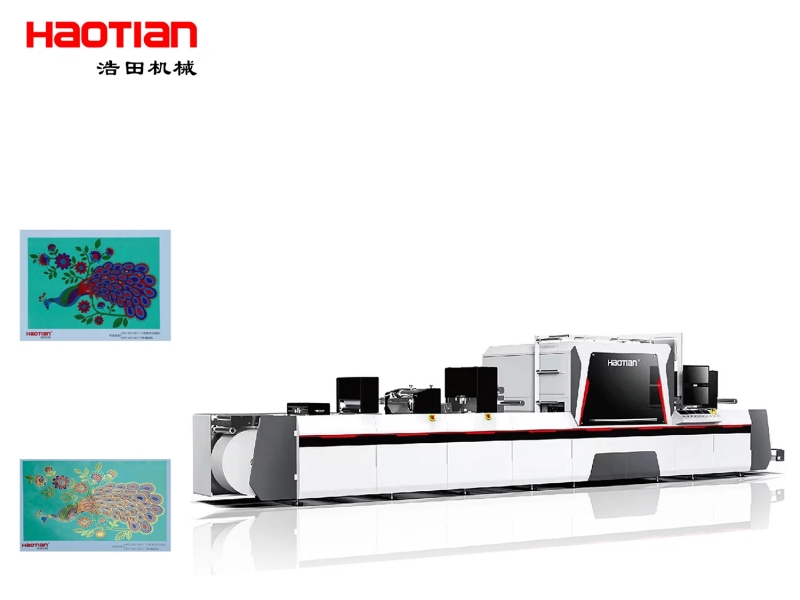What Is the Difference Between UV Printing and Normal Printing?
Nov 05, 2025
In the fast-changing world of printing technology, the debate between UV printing and normal printing has become increasingly important for manufacturers, packaging companies, and product designers. While both methods can deliver high-quality results, they differ greatly in terms of technology, application, and output. Understanding these differences helps businesses choose the right printing process for efficiency, color accuracy, and long-term performance.
1. The Core Technology: How Each Printing Method Works
Normal printing—commonly referred to as offset or traditional ink printing—relies on liquid inks that are absorbed by paper or other substrates. The drying process occurs through air evaporation, heat, or absorption, which can take several minutes to hours depending on the material.
By contrast, UV printing uses ultraviolet light to cure ink instantly. The ink contains special photoinitiators that react when exposed to UV light, turning liquid ink into a solid film within seconds. This process ensures sharper details and stronger adhesion on diverse materials such as metal, glass, acrylic, leather, and even flexible plastics.
Feature
Normal Printing
UV Printing
Ink Type
Solvent-based or water-based
UV-curable ink
Drying Method
Heat/absorption/air
Instant UV light curing
Suitable Materials
Paper, cardboard
Metal, glass, acrylic, plastic, wood
Color Accuracy
Good, may vary with paper
Excellent, consistent color output
Durability
Moderate
High resistance to scratches, water, and UV exposure
2. Printing Quality and Precision
When it comes to precision, UV printing outperforms normal printing, especially when using advanced systems like the High Speed Offset Digital Printing Machine. This type of machine can combine the fine detail of digital output with the efficiency of offset printing. It allows manufacturers to produce sharp text, precise gradients, and consistent tone even during long production runs.
Moreover, High Resolution Full Color UV Digital Printers can reach resolutions exceeding 2400 DPI, ensuring that even complex designs and small typography remain crystal clear. Normal printing, typically limited to 1200 DPI, may struggle to reproduce the same vibrancy and clarity—especially on coated or glossy materials.
3. Speed and Production Efficiency
One of the greatest advantages of UV technology lies in speed. Because UV inks cure instantly, there is no waiting time for drying—materials can move directly to cutting, laminating, or packaging. This feature is especially valuable in high-demand industries such as label manufacturing, packaging, and industrial decoration.
The UV Inkjet Label Digital Printing Machine exemplifies this efficiency. Designed for on-demand, short-run, or variable data printing, it can produce high-quality labels with photographic accuracy and zero ink absorption issues. Traditional offset printing, while fast for large batch runs, requires long setup times, plate production, and ink calibration, which can slow down workflow and increase costs for smaller orders.
Parameter
UV Inkjet Printing
Normal Offset Printing
Setup Time
Minimal (digital)
High (plates and alignment)
Drying Time
Instant
Several minutes to hours
Small Batch Cost
Low
High
Color Change Flexibility
Easy (digital)
Requires new plates
Waste Material
Very low
Higher (setup waste)
4. Material Versatility and Application Range
Normal printing is mainly used for paper-based applications—books, brochures, posters, and magazines. UV printing, however, goes far beyond. With the help of High Resolution Full Color UV Digital Printers, companies can print directly onto unconventional substrates, including metal, ceramics, plastic, and fabric, without the need for additional coatings or treatments.
This flexibility allows UV printing to dominate fields like:
Industrial signage and nameplates
Electronic product labeling
Custom packaging and branding
Promotional items (USB drives, pens, bottles)
Decorative and architectural panels
Manufacturers using High Speed Offset Digital Printing Machines often integrate UV curing to achieve hybrid functionality—merging the volume advantage of offset with the durability and vibrancy of UV-curable ink.
5. Durability and Environmental Impact
In terms of longevity, UV printing leads again. Because the ink cures into a solid polymer layer, the prints are resistant to water, abrasion, and chemical exposure. For outdoor signage, product labeling, or industrial applications, this durability significantly reduces reprints and maintenance costs.
From an environmental standpoint, UV printing is also cleaner. Traditional printing emits volatile organic compounds (VOCs) as inks dry. UV inks, on the other hand, contain no solvents and produce minimal emissions, aligning with eco-friendly manufacturing standards.
Statistical Comparison (Per 1,000 Prints)
VOC Emissions: 0.02 kg (UV) vs. 0.45 kg (Normal Printing)
Average Ink Waste: 3% (UV) vs. 8% (Normal Printing)
Energy Consumption: 20% lower in digital UV systems due to faster production cycles
6. Cost Considerations: Short vs. Long Runs
Cost efficiency depends on production volume. Traditional offset printing remains more economical for large-scale runs exceeding 50,000 copies, thanks to lower per-unit ink costs once setup is complete. However, UV printing is far superior for small to medium runs, especially when variable data or customization is required.
Print Volume
Best Technology
Key Benefit
Under 10,000 pcs
UV Inkjet Printing
Flexibility & instant turnaround
10,000–50,000 pcs
Hybrid Offset + UV
Balance of speed & cost
Above 50,000 pcs
Offset Printing
Economical for mass production
Businesses producing custom labels, packaging prototypes, or premium products often benefit most from UV Inkjet Label Digital Printing Machines, as they can deliver high-quality results with minimal waste and preparation time.
7. Choosing the Right Technology for Your Business
Selecting between UV and normal printing depends on factors such as product type, budget, and durability requirements.
If your focus is mass-market printing (magazines, flyers, newspapers), offset printing may still offer cost advantages.
If you produce premium packaging, signage, industrial labels, or promotional goods, investing in a High Resolution Full Color UV Digital Printer will ensure superior quality, faster delivery, and better ROI.
For hybrid production lines combining digital efficiency with traditional reliability, the High Speed Offset Digital Printing Machine provides the best of both worlds.
Ultimately, UV printing represents the future of industrial printing—offering unmatched versatility, eco-efficiency, and consistent performance across all surfaces.

 en
en 








 Tel :
Tel :  E-mail :
E-mail : 




 Network Supported
Network Supported

